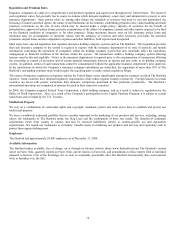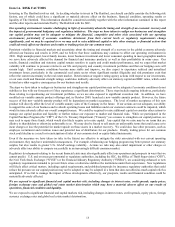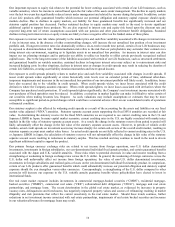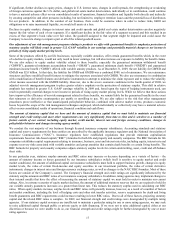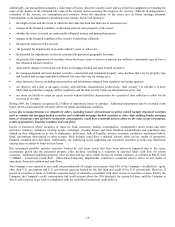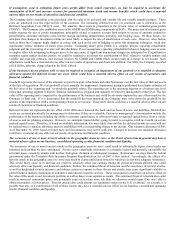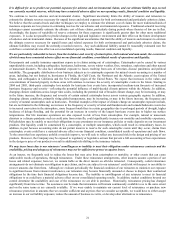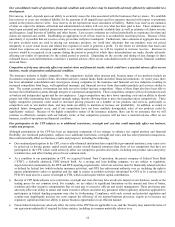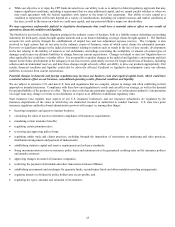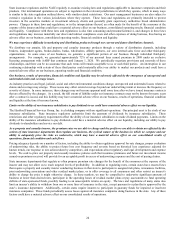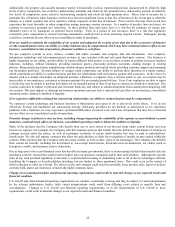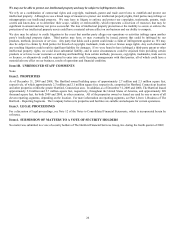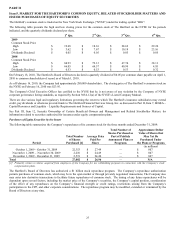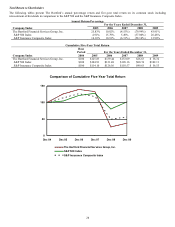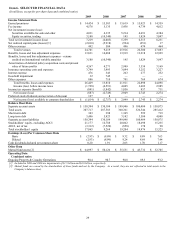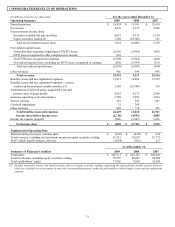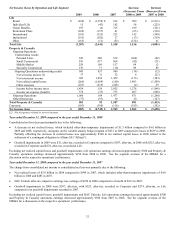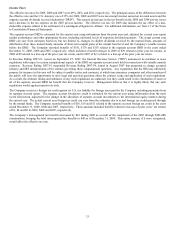The Hartford 2009 Annual Report Download - page 24
Download and view the complete annual report
Please find page 24 of the 2009 The Hartford annual report below. You can navigate through the pages in the report by either clicking on the pages listed below, or by using the keyword search tool below to find specific information within the annual report. 24
State insurance regulators and the NAIC regularly re-examine existing laws and regulations applicable to insurance companies and their
products. Our international operations are subject to regulation in the relevant jurisdictions in which they operate, which in many ways
is similar to the state regulation outlined above, with similar related restrictions. Our asset management businesses are also subject to
extensive regulation in the various jurisdictions where they operate. These laws and regulations are primarily intended to protect
investors in the securities markets or investment advisory clients and generally grant supervisory authorities broad administrative
powers. Changes in these laws and regulations, or in the interpretations thereof, are often made for the benefit of the consumer at the
expense of the insurer and thus could have a material adverse effect on our business, consolidated operating results, financial condition
and liquidity. Compliance with these laws and regulations is also time consuming and personnel-intensive, and changes in these laws
and regulations may increase materially our direct and indirect compliance costs and other expenses of doing business, thus having an
adverse effect on our business, consolidated operating results, financial condition and liquidity.
We may experience difficulty in marketing and distributing products through our current and future distribution channels.
We distribute our annuity, life and property and casualty insurance products through a variety of distribution channels, including
brokers, independent agents, broker-dealers, banks, wholesalers, affinity partners, our own internal sales force and other third-party
organizations. In some areas of our business, we generate a significant portion of our business through individual third-party
arrangements. For example, we generated approximately 72% of our personal lines earned premium in 2009 under an exclusive
licensing arrangement with AARP that continues until January 1, 2020. We periodically negotiate provisions and renewals of these
relationships, and there can be no assurance that such terms will remain acceptable to us or such third parties. An interruption in our
continuing relationship with certain of these third parties could materially affect our ability to market our products and could have a
material adverse effect on our business, operating results and financial condition.
Our business, results of operations, financial condition and liquidity may be adversely affected by the emergence of unexpected and
unintended claim and coverage issues.
As industry practices and legal, judicial, social and other environmental conditions change, unexpected and unintended issues related to
claims and coverage may emerge. These issues may either extend coverage beyond our underwriting intent or increase the frequency or
severity of claims. In some instances, these changes may not become apparent until some time after we have issued insurance contracts
that are affected by the changes. As a result, the full extent of liability under our insurance contracts may not be known for many years
after a contract is issued, and this liability may have a material adverse effect on our business, results of operations, financial condition
and liquidity at the time it becomes known.
Limits on the ability of our insurance subsidiaries to pay dividends to us could have a material adverse effect on our liquidity.
The Hartford Financial Services Group, Inc. is a holding company with no significant operations. Our principal asset is the stock of our
insurance subsidiaries. State insurance regulatory authorities limit the payment of dividends by insurance subsidiaries. These
restrictions and other regulatory requirements affect the ability of our insurance subsidiaries to make dividend payments. Limits on the
ability of the insurance subsidiaries to pay dividends could have a material adverse effect on our liquidity, including our ability to pay
dividends to shareholders and service our debt.
As a property and casualty insurer, the premium rates we are able to charge and the profits we are able to obtain are affected by the
actions of state insurance departments that regulate our business, the cyclical nature of the business in which we compete and our
ability to adequately price the risks we underwrite, which may have a material adverse effect on our consolidated results of
operations, financial condition and cash flows.
Pricing adequacy depends on a number of factors, including the ability to obtain regulatory approval for rate changes, proper evaluation
of underwriting risks, the ability to project future loss cost frequency and severity based on historical loss experience adjusted for
known trends, our response to rate actions taken by competitors, and expectations about regulatory and legal developments and expense
levels. We seek to price our property and casualty insurance policies such that insurance premiums and future net investment income
earned on premiums received will provide for an acceptable profit in excess of underwriting expenses and the cost of paying claims.
State insurance departments that regulate us often propose premium rate changes for the benefit of the consumer at the expense of the
insurer and may not allow us to reach targeted levels of profitability. In addition to regulating rates, certain states have enacted laws
that require a property and casualty insurer conducting business in that state to participate in assigned risk plans, reinsurance facilities,
joint underwriting associations and other residual market plans, or to offer coverage to all consumers and often restrict an insurer’ s
ability to charge the price it might otherwise charge. In these markets, we may be compelled to underwrite significant amounts of
business at lower than desired rates, participate in the operating losses of residual market plans or pay assessments to fund operating
deficits of state-sponsored funds, possibly leading to an unacceptable returns on equity. The laws and regulations of many states also
limit an insurer’ s ability to withdraw from one or more lines of insurance in the state, except pursuant to a plan that is approved by the
state’ s insurance department. Additionally, certain states require insurers to participate in guaranty funds for impaired or insolvent
insurance companies. These funds periodically assess losses against all insurance companies doing business in the state. Any of these
factors could have a material adverse effect on our consolidated results of operations.


